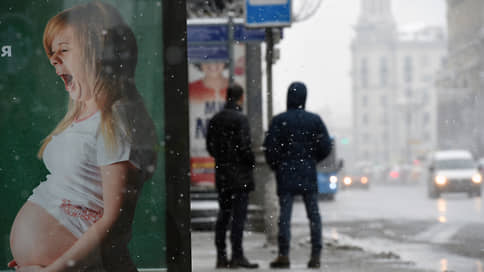What is childlessness tax
[ad_1]

At the beginning of December 2023, State Duma deputy Evgeny Fedorov proposed introducing a tax on childlessness in Russia, similar to that in force in the USSR. What kind of collection it was and how it worked is in the Kommersant certificate.
When did the tax appear?
The tax was established by the decree of the Presidium of the Supreme Soviet of the USSR dated November 21, 1941 “On the tax on bachelors, single and childless citizens of the USSR.” On July 8, 1944, it was finalized and received the name “tax on bachelors, single and small-family citizens.” The fee ceased to be collected after the birth or adoption of a child. In the event of the death of their only child, the parents again had to pay tax. It began to be canceled in July 1990. The fee was completely abolished on January 1, 1992.
Who paid the tax
The tax was paid by childless men aged 20 to 50 and childless married women aged 20 to 45. The fee was 6% of wages.
Since 1949, the tax rate has been increased for rural residents. Its amount for childless village residents was 150 rubles. per year, if there is one child – 50 rubles. per year, and if there are two – 25 rubles. in year.
Who was exempt from paying tax?
Some categories of citizens were exempt from paying tax:
– people with a salary of less than 70 rubles. per month;
– those who, for health reasons, could not have children;
– monks and nuns of Orthodox monasteries and other faiths who have taken a vow of celibacy (since 1946);
– citizens whose children died or went missing on the fronts of the Great Patriotic War.
Who received tax breaks?
The tax rate was reduced for people with a salary of less than 91 rubles. Tax benefits were also available to military personnel, students of secondary specialized and higher educational institutions under the age of 25, Heroes of the Soviet Union, and holders of the Order of Glory of three degrees.
Since the late 1980s, a deferment for newlyweds has been introduced. They were given a year from the date of marriage to have a child.
Attempts to return tax
Proposals to return the childlessness tax to Russia have been put forward several times since the collapse of the USSR.
In 2003, with a similar initiative spoke Deputy Alexander Chuev. He proposed establishing a tax of 3–5% of wages. The parliamentarian wanted to use the collected money to increase the size of the one-time benefit for the birth of a child to 10 thousand rubles.
In January 2013, Archpriest Dimitry Smirnov proposed returning the childlessness tax. “If you don’t want to go through the feat of having children… or you can’t, then take part in this with money, a small tax,” said the clergyman.
Introduce a tax on childlessness in 2017 offered Moscow City Duma deputy Nikolai Gubenko. He wanted the fee to be paid by wealthy residents of the capital. It was proposed to direct the money to the needs of large families and projects to increase the birth rate. In addition, in the same year, director of the Institute of Demography, Migration and Regional Development Yuri Krupnov sent to President Vladimir Putin a draft federal law on the status of large families. Among other things, it proposed a tax refund for people without children or with just one child. The money would have to go to a special Future Fund to support large families.
In 2020, with the initiative to return the childlessness tax spoke Chairman of the public organization “Council of Mothers” Tatyana Butskaya. She suggested charging a fee of 500 rubles. from women and men of reproductive age. “We are talking about those who consciously refuse the decision to have a child. If they don’t like it, let them pay the tax and don’t like it anymore,” said Tatyana Butskaya.
December 4, 2023 State Duma deputy Evgeny Fedorov offered return the childlessness tax. “Introducing a tax on childlessness, like in the Soviet Union, would be nice. It is necessary to stimulate the birth of children, including through maternal capital. If there is not enough money for these projects, a tax must be introduced. This is not a punishment – this is a way to solve the problem.”
[ad_2]
Source link








